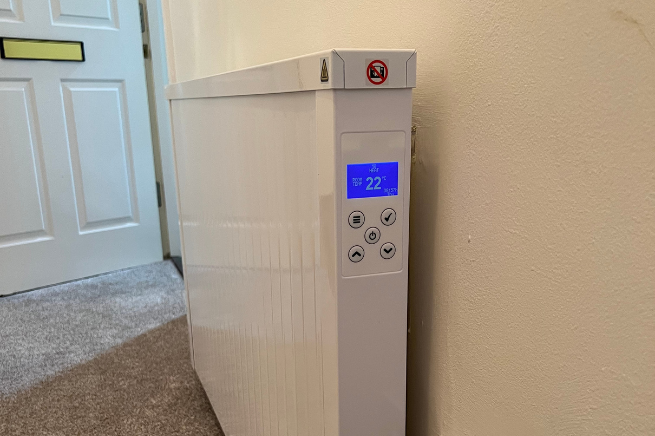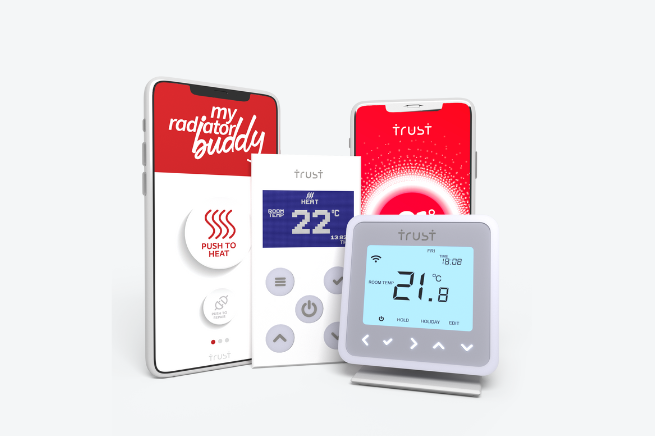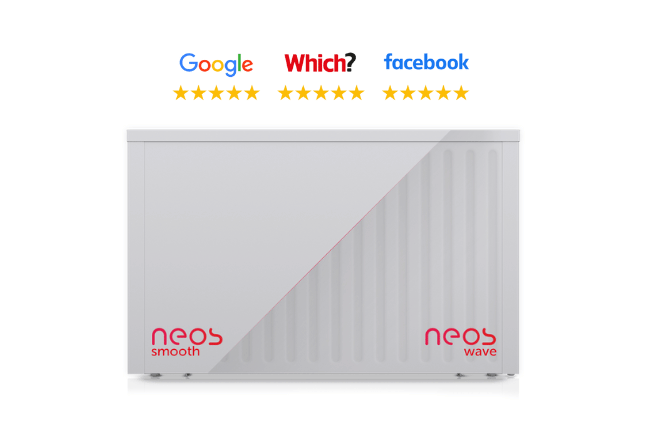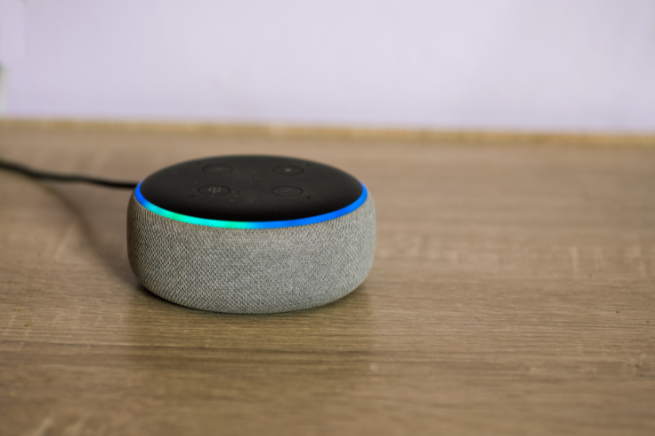
The world of home heating has evolved significantly in recent years, thanks to advancements in technology. Gone are the days of manually adjusting thermostats and dealing with inefficient heating systems. With the advent of smart heating, homeowners now have the power to control their home’s temperature with ease, optimise energy usage, and enjoy unparalleled convenience and comfort.
In this article, we will explore the fascinating world of smart home heating, their features, benefits, and how they work. Whether you’re looking to upgrade your existing heating system or planning to build a new home, understanding the potential of smart heating solutions can help you make informed decisions that enhance your quality of life.
Discover the incredible advantages of smart heating - the ultimate home heating solutions. Through the power of internet connectivity, sensors, and intelligent algorithms
Efficient heating optimise energy usage by adjusting heating patterns based on occupancy, weather, and user preferences. Smart systems offer remote temperature control through mobile apps and web interfaces.
Homeowners can remotely manage their heating from anywhere with an internet connection utilising advanced algorithms to learn from user behaviours and optimise comfort and energy efficiency.
Smart home heating systems, also known as connected heating systems, are advanced home heating solutions that leverage internet connectivity, sensors, and intelligent algorithms to provide precise temperature control, energy efficiency, and remote access capabilities. These systems allow homeowners to regulate their home’s heating remotely, receive energy usage insights, and even learn their preferences over time for automated adjustments.

One of the primary advantages of smarter heating is their ability to optimise energy usage. By intelligently adjusting heating patterns based on occupancy, weather conditions multi room used, and user preferences, these systems ensure that energy is not wasted when heating is unnecessary. As a result, homeowners can significantly reduce their energy consumption and lower their carbon footprint.
Smarter heating systems are designed to save homeowners money by maximizing energy efficiency. By reducing energy waste, these systems can lead to substantial cost savings on heating bills. Additionally, some smart heating solutions provide energy usage reports and recommendations, empowering users to make informed choices and further reduce their energy expenses.
With smart heating set ups, homeowners can say goodbye to manual temperature adjustments and welcome the convenience of remote control. Imagine being able to adjust your home’s temperature from your smartphone before you even step through the door. Smart heating configurations offer unparalleled comfort by allowing users to preheat their homes, create personalized schedules, and ensure the perfect temperature at all times.
Thermostat control
Next gen heating applications typically include advanced thermostats that serve as the control hub for temperature regulation. These thermostats are equipped with intuitive interfaces, allowing users to easily set and adjust temperature settings. With smart features, like touchscreen displays and user-friendly interfaces, controlling the temperature of your home becomes effortless and convenient.
One of the standout features of a smart heating set up is the ability to control your home’s temperature remotely. Through dedicated mobile apps or web interfaces, homeowners can access and adjust their heating system from anywhere, as long as they have an internet connection. Whether you’re at work, on vacation, or simply lounging on the couch, you can effortlessly manage your heating system to ensure a comfortable environment upon your return.
Smart heating applications are designed to learn from user behaviours and preferences. They use advanced algorithms to analyse occupancy patterns, weather conditions, and temperature adjustments over time. Based on this information, the system can proactively adjust temperature settings to optimise comfort and energy efficiency. Over time, the system becomes familiar with your routines and automatically adjusts the temperature accordingly, providing a personalized heating experience.
Another exciting feature of smart heating systems is their compatibility and integration with other smart home devices. These systems can seamlessly connect with voice assistants like Amazon Alexa or Google Assistant, allowing you to control your central heating and system through voice commands. Integration with other smart devices, such as smart lighting or smart blinds, enables a holistic and interconnected smart home experience.

Smart heating systems rely on a combination of sensors, connectivity, and intelligent algorithms to provide efficient and automated temperature control. The thermostat acts as the central controller, receiving inputs from various sensors that monitor temperature, humidity, occupancy, and external weather conditions. Based on these inputs, the system makes real-time adjustments to maintain the desired temperature level.
For example, if the system detects that no one is at home, it can lower the temperature to save energy. When it senses that occupants are returning, it can preheat the house to ensure a comfortable environment upon arrival. By continuously monitoring and adapting to changing conditions, smart heating systems provide precise temperature control and optimize energy usage.
Several types of smart heating systems are available in the market, each offering unique features and functionalities. Let’s explore some popular options:
Programmable thermostats allow users to set temperature schedules based on their daily routines. These thermostats enable pre-programmed temperature adjustments throughout the day, ensuring optimal comfort and energy savings. While they provide basic automation capabilities, they lack advanced features like remote access and learning capabilities.
Smart thermostats take temperature control to the next level. These devices offer advanced features such as remote access, learning capabilities, and integration with smart home devices. Other best smart thermostats can adapt to your preferences, automatically adjust temperatures based on occupancy, and provide detailed energy usage reports. They provide a higher level of convenience and energy efficiency compared to programmable thermostats.
Zoned heating systems divide a home into different zones, each with its best smart thermostat, and temperature controls. This allows for independent temperature regulation in each zone, catering to individual preferences and saving energy by not heating unused areas. Zoned heating systems can be controlled through smart thermostats, providing flexibility and customization for different areas of the house.

When selecting a new advanced system for your home, several factors should be considered to ensure the best fit. Here are some key considerations:
Compatibility with existing heating system
Before investing in a smart heating system, ensure compatibility with your existing heating infrastructure. Some systems may require specific wiring or compatibility with certain heating systems. It’s essential to check the specifications and compatibility requirements of the smart heating system to ensure a seamless integration with your home’s heating setup.
Look for a smart heating system with a user-friendly interface that is intuitive and easy to navigate. The control panel or mobile app should provide clear and straightforward options for setting temperature schedules, adjusting settings, and accessing energy usage data. A user-friendly interface ensures that you can quickly and efficiently manage your home’s heating system without any hassle.
Opt for a smart heating system that prioritizes both energy use and efficiency. Look for features such as occupancy detection, weather-based adjustments, and energy usage reports. These features help optimize energy consumption and reduce heating costs. The ability to set energy-saving modes and receive recommendations for energy-efficient settings can further enhance the system’s efficiency.
Consider the integration capabilities of the smart heating system with other smart home devices you may have or plan to incorporate in the future. Check if the system supports integration with voice assistants like Alexa Google assistant, Nest learning thermostat and Hive thermostat mini, smart lighting, or other devices that enhance the overall smart home experience. Integration allows for seamless control and coordination among different smart devices, providing a cohesive and convenient home automation ecosystem.

The installation and setup process of a smart electrical heating system can vary depending on the specific system and your home’s requirements. It is recommended to consult professional installers or follow the manufacturer’s guidelines for proper installation. Here are some general steps involved in the installation and setup process:
Turn off power: Before installation, ensure the power to your heating system is turned off to prevent any electrical hazards.
Remove existing thermostat: If you have an existing thermostat, carefully remove it from the wall and disconnect any wiring.
Mount and wire the smart thermostat: Mount the smart thermostat onto the wall according to the manufacturer’s instructions. Connect the necessary wiring to ensure proper functionality. It is advisable to follow the wiring diagram provided by the manufacturer or seek professional assistance.
Connect to Wi-Fi: Most smart thermostats require a Wi-Fi connection for remote access and control. Follow the instructions to connect the thermostat to your home’s Wi-Fi network.
Configure settings: Use the manufacturer’s mobile app or control panel to configure the settings for your smart heating system. Set up temperature schedules, preferences, and any additional features according to your needs.
Test and calibrate: Once the installation and setup are complete, test the system to ensure all functions are working correctly. Make any necessary calibrations or adjustments to fine-tune the temperature control.
To make the most of your smart heating system and optimise its benefits, consider the following tips:
Experiment with different temperature settings to find the optimal comfort level while maintaining energy efficiency. A slight adjustment in temperature can make a noticeable difference in energy and hot water consumption and heating costs.
Take advantage of the scheduling and automation features of your smart heating system. Create temperature schedules based on your daily routines and heating schedule to ensure comfort when you need it and energy savings when you’re away.
Regularly monitor the energy usage reports provided by your smart heating system. Pay attention to any spikes or unusual patterns that may indicate inefficient heating or potential issues. Adjust your settings accordingly to optimize energy usage.
Perform regular maintenance on your smart heating system to ensure its proper functioning. Replace batteries if necessary, clean sensors, and check for any software updates provided by the manufacturer. Proper maintenance ensures optimal performance and extends the lifespan of the system.

While next gen heating offer numerous benefits, it’s important to be aware of potential challenges and considerations before making a decision. Here are some factors to keep in mind:
Advanced heating systems typically involve an initial investment cost, which includes the purchase of smart thermostats and potentially additional sensors or equipment. While the long-term energy savings can offset this cost, it’s important to budget and evaluate the return on investment based on your specific heating needs and energy consumption patterns.
Since smart heating systems rely on internet connectivity for remote access and control, a stable and reliable internet connection is crucial. Ensure that your home has a strong and consistent Wi-Fi signal throughout the areas where the smart heating system will be installed. In cases of internet outages or connectivity issues, it’s advisable to have backup measures or alternative methods to manually control the heating system.
With the increasing connectivity of smart home devices, privacy and security become important considerations. Ensure that the smart heating system you choose has robust security measures in place to protect your data and privacy. Regularly update the system’s firmware and follow best practices for securing your home network, such as using strong passwords and enabling encryption.
As technology continues to advance, the future of smart heating systems looks promising. Here are some potential trends to watch out for:
Enhanced machine learning capabilities: Smarter heating systems may become even more intelligent and adaptive, using advanced machine learning algorithms to predict user preferences, optimise energy consumption, and automate temperature adjustments.
Integration with renewable energy sources: With the growing focus on sustainability, future smart heating systems may integrate seamlessly with renewable energy sources such as solar panels or geothermal systems, further reducing reliance on traditional energy sources.
Enhanced user interfaces: The user interfaces of smart heating systems are likely to become even more intuitive and user-friendly, offering enhanced features, visualizations, and recommendations to maximize energy efficiency and user comfort.
Smart heating systems have revolutionised the way we control and manage our home’s temperature. With their energy-saving capabilities, remote access features, and seamless integration with other smart devices, they provide unprecedented convenience, comfort, and efficiency. By considering the benefits, features, and considerations discussed in this article, you can make an informed decision when selecting the right smart heating system for your home.
1. Can I control a smart heating system from my smartphone? Yes, smart heating systems typically come with mobile apps that allow you to control and monitor your home’s temperature remotely from your smartphone or tablet.
2. Are smart heating systems compatible with all heating systems? Smart heating systems have varying compatibility requirements. It’s important to check the specifications and compatibility information provided by the smart device manufacturer to ensure compatibility with your existing heating system.
3. Can smart heating systems help reduce my energy bills? Yes, smart heating systems are designed to optimize energy usage, leading to potential cost savings on heating bills. By adjusting temperature settings based on occupancy and weather conditions, these systems can significantly reduce energy waste.
4. Are smart heating systems difficult to install? The installation process of a smart heating system can vary depending on the specific system and your home’s requirements. While some systems can be installed by homeowners, it’s advisable to consult professional installers or follow the manufacturer’s guidelines for proper installation.
5. What happens if my internet connection goes down? In the event of an internet connection failure, some smart heating systems may still be able to maintain basic temperature control based on pre-programmed settings. However, remote access and control features will not be available until the internet connection is restored.
Tags: Understanding Heating.

If you are considering electric heating/electric radiators, then this guide tells you everything you need to know. Discover this modern, sustainable and economical method of heating that gives you complete control and comfort. Download Free Guide now.

*Trust Electric Heating needs the contact information you provide to us to contact you about our products and services. You may unsubscribe from these communications at any time. For information on how to unsubscribe, as well as our privacy practices and commitment to protecting your privacy, check out our Privacy Policy.
Quick installation and a 100 day warmth guarantee. Whether you’re buying one or several radiators, if our radiators don’t heat your room to a minimum of 20 degrees we will undertake to upgrade or replace the radiators free of charge.
Book your free consultation